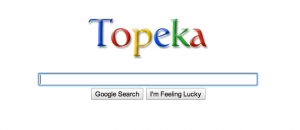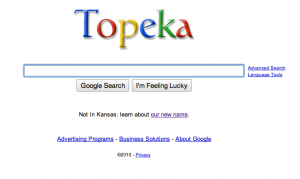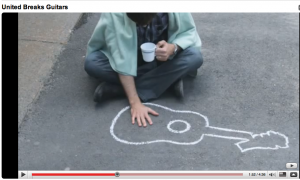When I first heard about the racy photo tweeted from Rep. Anthony Weiner’s account, I thought the “I’ve been hacked” defense seemed dubious, especially since Rep. Weiner had not chosen to have law enforcement authorities investigate the alleged crime.
I thought it was much more likely that he had simply made a mistake, and replied to a tweet from the young lady in Washington state instead of sending a direct message with his photo. It’s a difference between typing “@” before her username instead of “d “ – which made the photo link visible to his 45,000 followers, and by extension, to the world.
Following his mistake, we now know Rep. Weiner broke just about every rule of PR and crisis management – making up a story about being hacked, denying that he had sent the picture and evading the question of whether the photo was of him. I thought the low point was when he berated ABC News’ Jonathan Karl for “not understand(ing) how social networks work.”
Monday we learned that the simple explanation was in fact the right one. As The Hill reported:
“Once I realized I had posted it to Twitter I panicked, I took it down, and said that I had been hacked,” Weiner said at a press conference in New York. “To be clear the picture was of me and I sent it.”
In actuality, Weiner had committed one of the classic errors of the micro-blogging platform: tweeting a message that was intended to be sent as a direct message. Direct messages are private messages that can only be sent to a user to one of their followers.
This outcome, especially when considered in light of a similar issue involving former Green Bay Packers quarterback Brett Favre (OK, he played for the Vikings, too) and the allegations of his “sexting” a female sideline reporter when he played a season with the New York Jets, provides a fitting illustration of a principle I’ve found myself regularly mentioning in presentations, and which I am now codifying as my 38th Thesis:
Social media raise the cost of bad behavior because they make it more likely misdeeds will be discovered.
By the account of Jenn Sterger, the photos Brett Favre allegedly sent her via text message were at least as explicit as Rep. Weiner’s. But we’re still saying “allegedly” in the Favre case, partly because the photos were sent via SMS instead of on a social network like Twitter. And her revelation came about two years after the alleged incident. The first news story about the Weiner tweet, by contrast, showed up within just a few hours.
Twitter is much more powerful as a communication vehicle than text messaging is because tweets can be discovered and spread by anyone, and because for regular tweets (as opposed to direct messages), there are no intended “recipients.”
But the same tools that can be so beneficial when used for good can have devastating effects when mishandled. The Favre sexting controversy took two months to be resolved, with the NFL commissioner finally settling on a $50,000 fine. The Weiner case took 10 days from tweet to tearful confession.
Of course there were various differences between these two examples, and it isn’t my point to go through these fine distinctions. I just think it’s interesting to see how rapidly the Weiner case developed, and to consider how social media accelerated his decline. Two weeks ago tomorrow he was being mentioned as a leading candidate for mayor of New York. Today he has many of his party members in Congress urging him to resign.
In my presentations I have often suggested that users should apply the “front page” test to all of their online postings. As we’ve seen recently with Rep. Weiner, sometimes those postings really do make the front page.
What do you think? What are the social media lessons you take from this case study?


